The Institute of the Masters of Wine Riesling master class at Vinexpo 2017
One of the instructional highlights of Vinexpo 2017 was the Greatest Rieslings from Around the World master class presented by the Institute of the Institute of the Masters of Wine on 20 June 2017, first session of Riesling Day at Vinexpo.
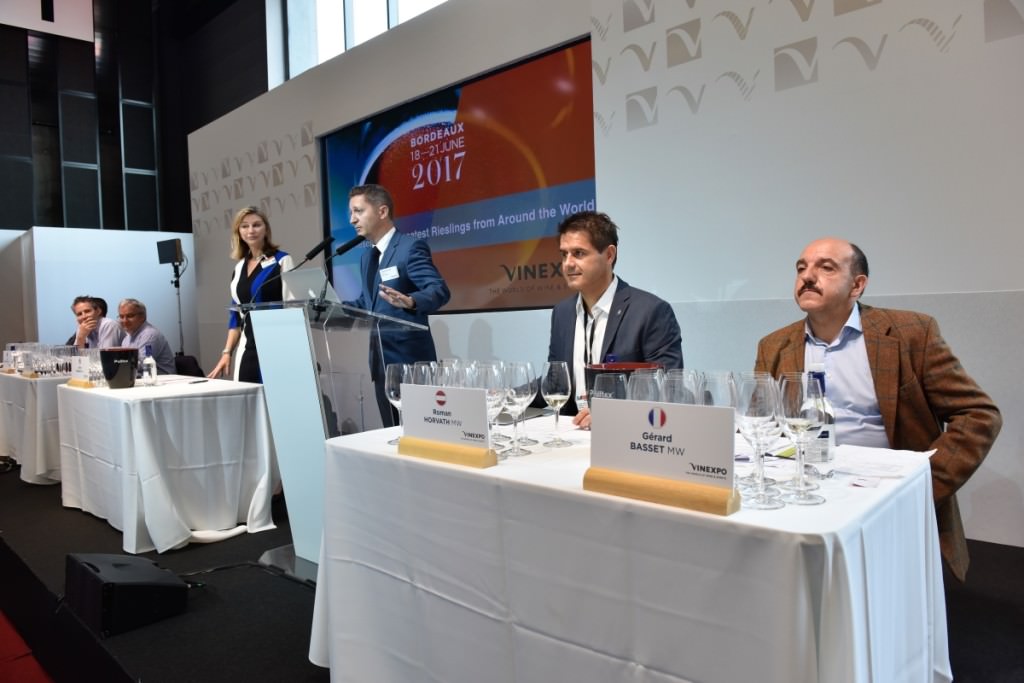
Guillaume Deglise, CEO Vinexpo, introduces the panel of MWs at the Vinexpo masterclass on Riesling Day
In terms of sheer accumulated knowledge and experience the six MWs on the dais were hard to beat. They included some eminent names: Gerard Basset MW (with more letters after his name than the Oxford dictionary), Justin Howard-Sneyd MW, Roman Horvath MW, Markus del Monego MW and Mathew Deller MW, moderated by Debra Meiburg MW. Each had picked the bests Rieslings from a single country of their choice: Austria, Alsace, Germany, North America, Australia.
Riesling, said Meiburg, was the “wine grape that wine lovers revere but the market knows little about,” echoing common perception: Riesling was a conoisseur’s delight with few takers commercially.
The class was broken into 3 sections for tasting: the Dry Flight, the Open Flight, and the Off-dry to Sweet Flight.
The Dry Flight:
Red Newt Tango Oaks Vineyard Finger Lakes Riesling 2013, U.S. 10.6% Alcohol (Alc) pH 3.15, Residual Sugar (RS) 6 g/L.
Pechstein Riesling Grosses Gewächs, Reichsrat von Buhl 2013, Germany (A modern approach to winemaking reflected here, showcasing Riesling away from the typical petrol character. Alc 13.2% pH 3, RS 1.1g/L. Ripe fruit, minerality and lively acidity; a delight.
Brundlmayer Zöbinger Heiligenstein Alte Reben Riesling 2015, Austria My favourite, not just because I’ve tasted Willi Brundlmayer’s exceptional wines at his Kamptal winery 2 years ago. This Riesling was from his premium 9 acre holding Zöbinger Heiligenstein, and led the MWs to comment on the similarities between German and Austrian Riesling. In Austria, Riesling comes in as #2 in popularity after Gruner Veltliner. Al 13.5%, RS 4.9g/L.
Grosset Polish Hill Riesling 2016 Clare Valley, Australia An organic fruit-filled young Riesling meant for long aging from Riesling specialist Jeffrey Grosset. “He’s obsessed by purity of fruit,” said Howard-Sneyd. His Fifty Shades-like analogy for the wine’s precise acidity: “Like running your tongue down the edge of a knife.” Eat your heart out, Christian Grey.
Cuvée Frédérique Emile Riesling 2008, Domaine Trimbach, Alsace, France Being the oldest in the flight, secondary characteristics were already apparent – mineral and herbaceous notes. Alc 13% RS 3 g/L.
Open Flight:
Pewsey Vale ‘The Contours’ Riesling, Museum Release Eden Valley 2011, Australia Entering its mature phase and drinking like a dream, this Riesling from this very niche single grape variety single vineyard. Citrus and lashings of buttered toast despite the zero oak. Alc 11.5%, pH 3.0, RS 1.9 g/L. If you can get your hands on this one, go for it!
Schloss Johannisberg Silberlack Riesling Grosses Gewächs, Weingut Schloss 2008, Germany A classic Riesling from a classified growth, fruit driven – mirabelle, apricot, softer notes of spice and honey. Alc 12.5% RS 7.1 g/L.
Chateau Ste Michelle & Dr Loosen Eroica Riesling, Columbia Valley 2008, U.S. Eroica was the well-known collaboration between Riesling specialists Chateau Ste Michelle (“biggest, marketer of Riesling in the world”) and the famous Dr Ernest Loosen of Mosel, Germany, this library release was described by Deller as the “’tweener between Old and New World styles.” Alc 11.5%, RS 17.7 h/L.
Domaine Zind-Humbrecht, Rangen Clos-Saint-Urbain Riesling 2013, Alsace, France Made in a difficult year and saved by an Indian summer, this modern biodynamic Alsatian has ripe yellow fruit with a hint of saline in the aftertaste. A critics’ favourite with soaring scores.
Domäne Wachau, Achleiten Smaragd Riesling 2002, Austria This golden, aged single vineyard delight was displaying secondary characteristics – nuttiness, dry herbs and distinct minerality. Alc 13.5%, RS 7.0 g/L.
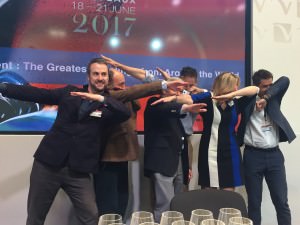
At the end of the session, the MWs do ‘the dab’ for the crowd, egged on by Debra Meiburg. Umm….. at least they try!
Off-dry to Sweet Flight:
Domaine Weinbach ‘L’Inedit’ Riesling 2015, Alsace, France From the big Grand Cru Schlossberg vineyard gown on 65 year old vines, this has youthful fruit and a hint of the savoury. Alc 14%, RS 15 g/L.
Weingut Witwe Dr H. Thanisch-Erben Bernkasteler Doctor Riesling Spätlese 2015, Germany High sugar, low alcohol in this Mosel Valley Riesling. Fruit, spice, old oak and a hint of saffron. Quite complex. Alc 7.4% RS 84 g/L.
Rieslingfreak No 8, Polish Hill River 2016, Clare Valley, Australia The winemaker, John Hughes, is obsessive about Riesling hence the name, said Howard-Sneyd. The label boldly proclaims his “reverence of Riesling.” On the lines of a Mosel Kabinett, refreshing fruit, low alcohol, high sugar. Alc 7%, RS 51 g/L.
Inniskillin Icewine Riesling, Niagara 2007, Canada Canada is the largest producer of Icewine because of its climate, and this is the most copied wine style in China, said Deller. Inniskillin is one of the premier Icewines of Canada. Alc 9%, RS 242 g/L. (NB: Note the sharp uptick in residual sugar in the wine flights.)
Riesling Trockenbeerenauslese Kellerberg Riesling 2015, Domäne Wachau, Austria Peachy stone fruit flavours concentrated in a glass, with acidity balancing the hit of sweetness. Alc 8%, RS 314 g/L.
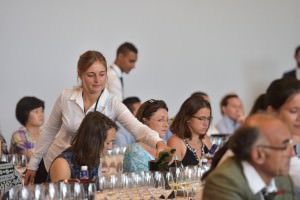 MW chat on Riesling:
MW chat on Riesling:
In the early years, the ‘other’ cheap Rieslings (read Liebfraumilch/Blue Nun and other sweet supermarket brands) did damage the Riesling image, and volumes are still low considering the quality available, said Basset. Meiburg agreed, “It goes very well with a range of Asian food.” Horvath called Riesling, “the most exciting grape variety in the world. It has so many different styles that it can intimidate on the shelves and should be an exciting pick for restaurants and the trade.”
Del Monego believed the often incomprehensible labels have been a deterrent, “No one understands them. Germany itself has discovered Riesling in the last 10 years, and they seem to prefer the high quality dry style of Riesling there.” Having a sweetness scale on the back label might help customers, added Howard-Sneyd, while Deller believed “We overthink labeling. People’s first visual reaction should be ‘delicious’.” Del Manego said that back labeling in Germany had made progress of late with the addition of some basic information and food pairing suggestions. “In Germany we want everything to be perfect!”
Deller’s sobering revelation was about the shockingly low awareness about quality Riesling in the US. “Sommeliers say they have battle fatigue promoting Rieslings to their clientele. The petrol character repels, all they want is Prosecco and Sauvignon Blanc.”
Riesling is a grape that can handle tough climate variations better than many other varieties, said Horvath. Yes, if you want to take a single vine to a desert island – take a Riesling. It’s best equipped to handle impending climate change, said Meiburg. Plus, older vintages are still affordable.
“Riesling has two sides to its expression: fresh and lively when young, and 4-5 years later, it becomes more complex, it gets that extra dimension. It has the ability to age,” said Horvath.
Riesling lovers, you might want to put some of these Rieslings, selected by this heavyweight panel of MWs, on your wish list.

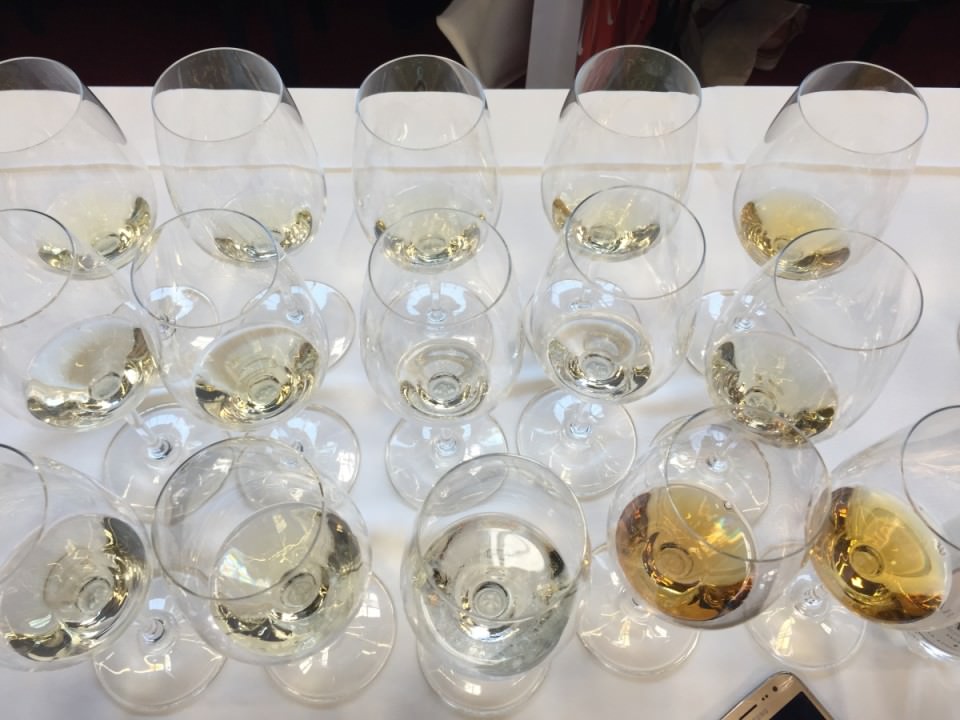
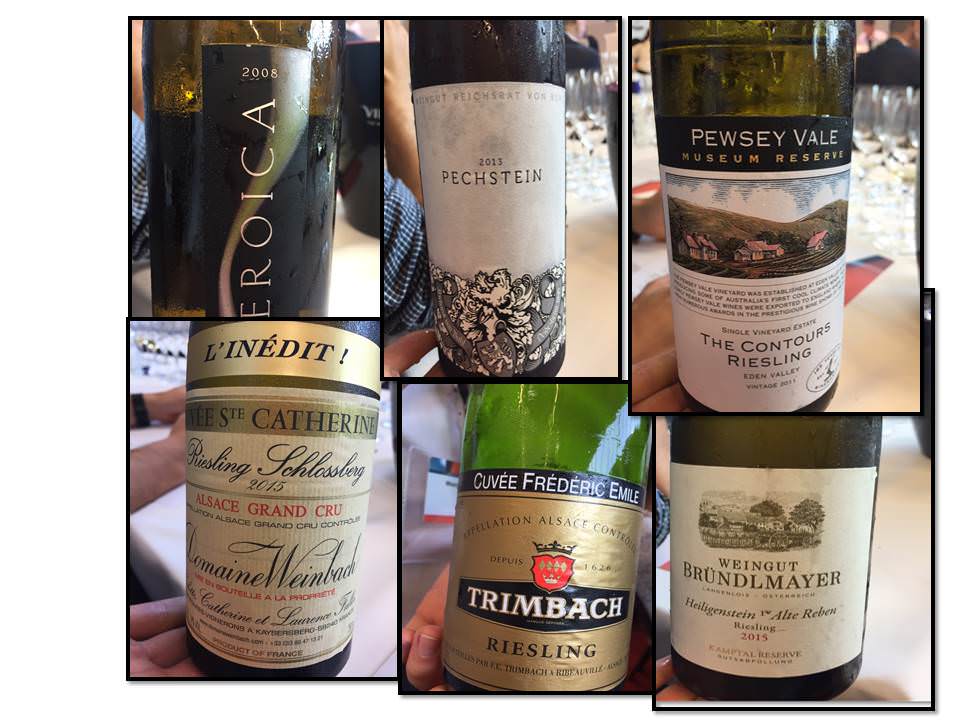
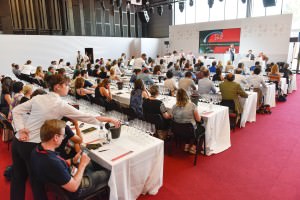
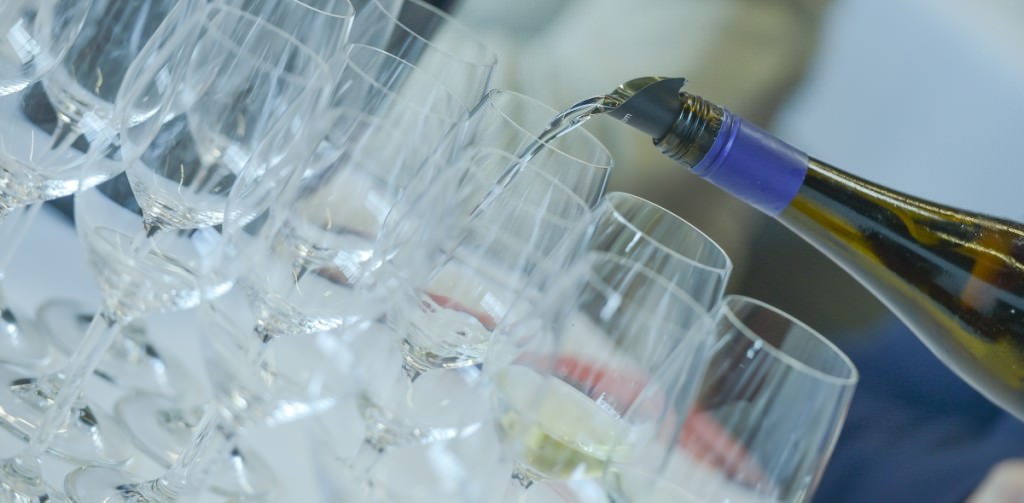
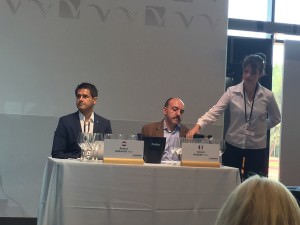
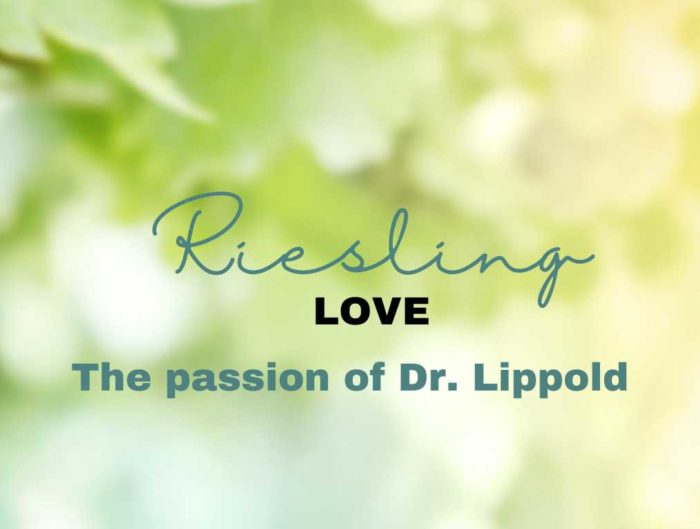
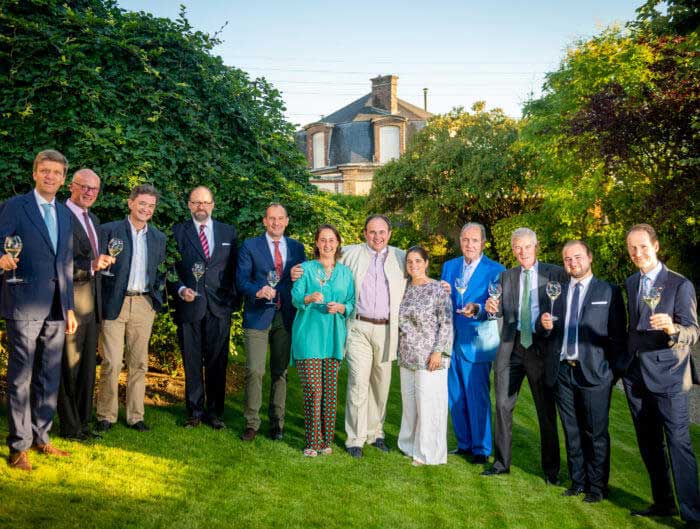
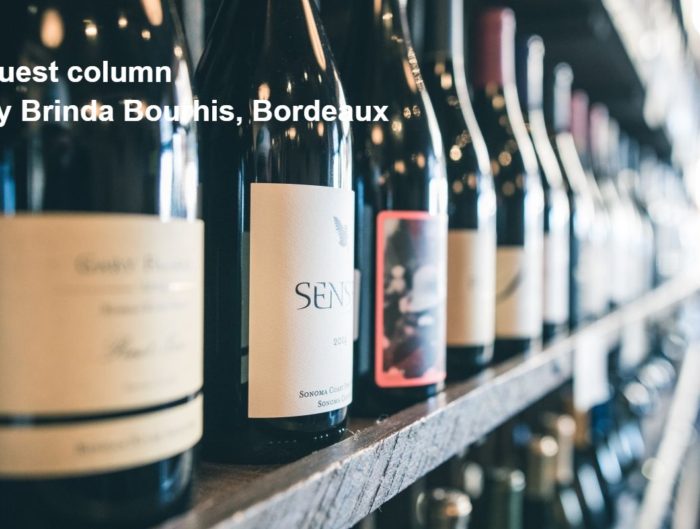
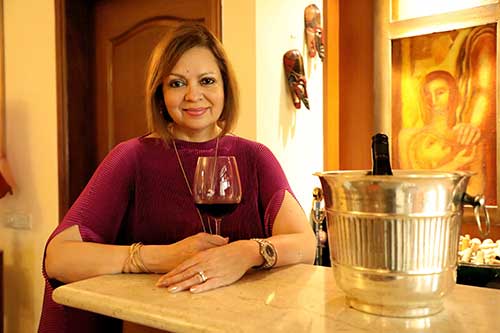
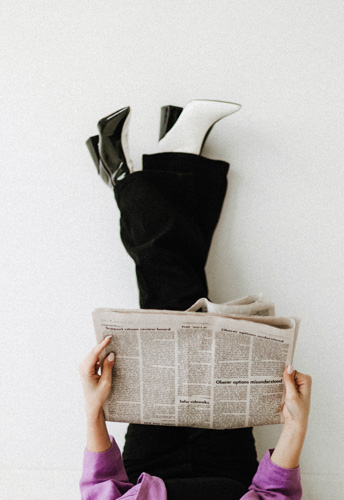
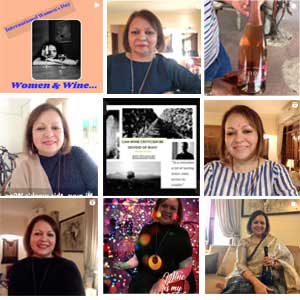


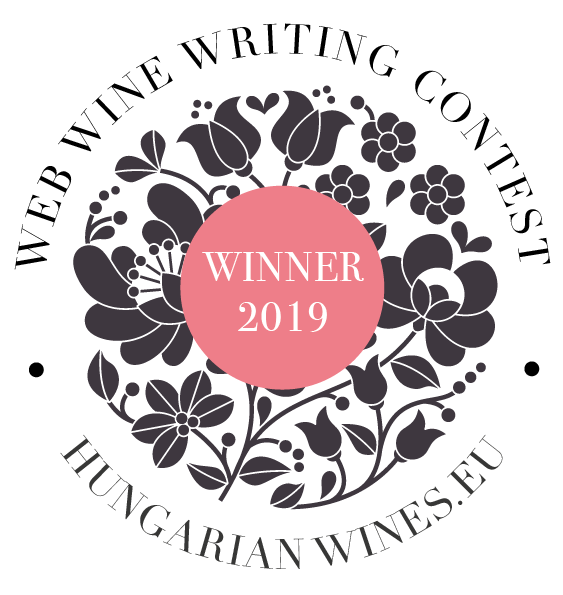


Leave A Reply